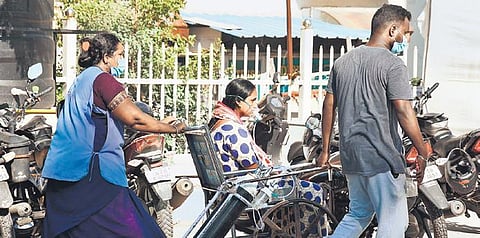

MUMBAI: At a time when Delhi is gasping for oxygen, the Brihanmumbai Municipal Corporation (BMC) has been able to bring down positivity and mortality rates, ensuring that not a single Covid patient is deprived of oxygen supply.
The Supreme Court has appreciated the ‘Mumbai Model’ and asked Delhi and the Centre to take a look at it so that no one in Delhi suffers oxygen shortage. P Velrasu, additional municipal commissioner (project), told this newspaper that they worked on various fronts to counter oxygen shortage. The normal demand per day for Mumbai’s oxygen is 210 MT, at peak, it was 260 MT and now, it is 240 MT.
“When the first wave receded, we installed 11 tankers with a capacity of 13 kilolitre oxygen supply per minute. There are eight tankers supplying 10 kilolitre oxygen per minute to all major hospitals. Our focus was to create a storage facility. We installed these oxygen-supplying tankers with a concrete base within 40 days,” said P Velrasu.
Apart from tankers, the BMC also arranged the dura cylinders (these are low-pressure liquid cylinders which provide the longest holding time, lowest evaporation rate, highest gas-withdrawal rate and best life-cycle cost) for nursing homes and small hospitals. “We formed teams of dedicated engineers and technicians for each civic ward. There are 24 wards in Mumbai. The teams’ job is to monitor the use of oxygen, plug leakages and supervise logistics. If anyone uses more than required amount of oxygen, then it is noticed immediately. A judicious use of oxygen is a must in the pandemic time,” said Vijay Balamwar, BMC’s deputy municipal commissioner.
“We also wrote to the Food & Drugs Administration seeking guidelines for oxygen usage. Each normal positive patient whose oxygen level is down requires 5 litres of oxygen per minute. It can go up to 12-15 litre per minute. It can also come down to 2-3 litre per minute. This micro evaluation helped us to save much on oxygen,” Balamwar said.
P Velrasu said the state supplies medical oxygen from the centrally allotted plants such as the one in Jamnagar, Gujarat. “The most important point is storage. We cannot have a situation where harassed people are running helter-skelter for oxygen, which is what is happening in Delhi,” he said. He said a quick response team was formed to handle an emergency situation, which was visualised: there could be a mismatch or miscommunication; hospitals could face a sudden shortage of oxygen threatening the stocks. In such a situation, the QRT was to be sent,” said Velrasu.
Instruction
Hospitals have been told that if their supply of oxygen dries up, they should inform BMC at least three hours in advance